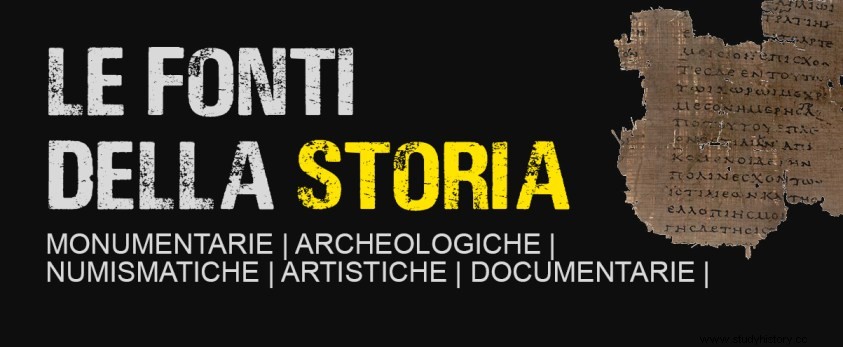
The historical sciences, like any other scientific discipline, are based on the scientific method, which, however, in the case of history, cannot make use of the experimental component since, for the historian, or rather, for the historian, it is impossible to make experiments in laboratory, he can observe the phenomenon he intends to study.
But then, how does the historian verify his theories and empirically prove their truthfulness, and how can a historian refute an erroneous theory?
The answer is simple, it does so by making a slight modification to the scientific method that de facto allows it to obviate the impossibility of "experimenting" in a "traditional" way. In fact, the historian's work is a work that is mainly based on research, analysis and verification of sources.
The sources are the fundamental building blocks that allow the historian to travel in time and reconstruct events and dynamics of the more or less remote past.
The historian has access to different types of sources, which are generally divided into two macro categories.
- Primary sources
- Secondary sources
By primary sources we mean a whole series of sources produced in the historical period being studied and which do not necessarily have historiographical purposes. Among the primary sources we can find documents, contracts, coins, public deeds, private documents, commercial registers, bills, monuments, works of art, etc.
By secondary sources, on the other hand, we mean a series of sources, produced at a later time, which generally are based on direct or indirect evidence and on primary sources. Among the secondary sources we can find chronicles, reconstructions, historical stories made both by contemporary authors to the events narrated, and posthumously, and therefore.
The historiographer, through the analysis and comparison of sources, primary and secondary, in turn produces documentary material, which enriches the sources available on a specific period and / or events, and increasing the degrees of distance between the historian and the event, there will be an exponential increase in the historical sources on a specific historical event, which will have a double effect.
On the one hand, it will simplify the search for sources, since being many, it will be easier to identify them, on the other hand, it complicates the verification and refutation phase, since, being their volume very high, the historian will be forced to carefully select his own sources, taking care not to run into false historians or already refuted theories.
False historians are one of the great problems that plague contemporary history, particularly the last two centuries or so. They are partly an undesirable effect of the proliferation of documents and sources of various types, combined with the massive presence of direct witnesses of the events interviewed by historians, and partly, they are the result of past eras in which there was the will to produce and consciously false historians, sometimes for economic, sometimes political reasons.
In the nineteenth century in particular, with the reorganization of society and the rise of the bourgeoisie, especially in Europe, there was a growing demand for ancient artifacts, sought after by bourgeois collectors to link their family name, to a past in which that non-aristocratic name had apparently been kept away from history, something similar had already happened with Renaissance patronage, when, especially in Italy, the wealthy merchant families began to collect texts and works of art produced in that era but also works from the classical world.
The growing demand for ancient artifacts and manuscripts fueled a thriving market of counterfeiters who, when necessary, created poems, ancient texts, artifacts, ritual or torture objects, coming from an apparently forgotten archaic world, but which was actually built by chasing the taste of potential buyers.
On the other hand, in the same period, numerous works were also produced for political reasons aimed at insinuating the existence of conspiracies and secret congregations, and among the most famous examples, there are the order of the Rosicrucians, born almost as a joke , making a mockery of the Masonic lodges of the time, and the conspiracy of the sages of Zion, a conspiracy that never really existed, and based on false documents built ad hoc, for political purposes, in the tsarist empire at the end of the nineteenth century.
Today historians or historiographers, if you prefer, have access to numerous types of sources, which differ according to the period studied. These sources are the residues, the remains, of a time now lost, and it is the historian's task to use these pieces, these elementary bricks, to reconstruct, albeit only on a narrative level, what was the society of the past, a society of which we do not have and cannot have a real memory, but we have knowledge of it through historical reconstruction. And the great difficulty of the historian lies in being able to interpret the sources to which he has access, positioning them in the most appropriate way, and recognizing the authentic sources from the false ones, so as to be able to reconstruct a past, as faithful as possible to reality, even if perhaps, not being able to travel in time, we will never really be able to understand the daily reality of a time that we have not lived.
